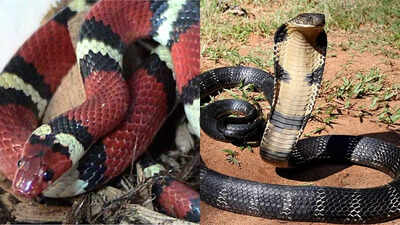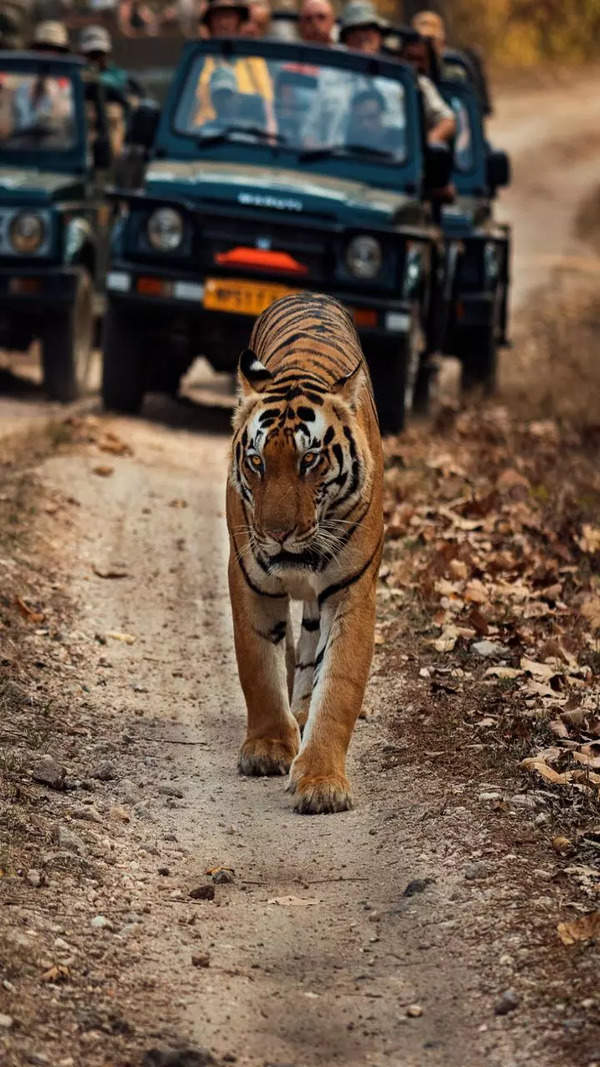Trending
King cobra vs kingsnake : Understanding the differences in venom potency, traits, and who would win in a fight
Kingsnakes and King Cobras, despite their regal names, differ significantly in venom potency, size, diet, habitat, and behavior. Kingsnakes are non-venomous constrictors, smaller, and generally docile, while King Cobras possess potent venom, can reach 18 feet, are highly territorial, and primarily prey on other snakes. Their intriguing distinctions make them unique among serpents.
The kingsnake and king cobra are two of the most interesting snakes in the world, both with special features and attributes that distinguish them from others. Although both have a regal name, their similarities pretty much stop there. From venom strength to their environments and behavior, these snakes could not be more different. The king cobra, which boasts the most deadly venom, is the world's longest venomous snake, while the kingsnake, much maligned, is recognized by its dramatic appearance and non-venomous status. Explore the fascinating realm of these snakes to discover the startling differences between them and find out what really sets each apart.
Who would win in a fight between kingsnake and kind cobra?
In a theoretical fight between a Kingsnake and a King Cobra, the King Cobra would be the winner because of its size, venom, and experience as a hunter. The much bigger King Cobra would use its capability to strike downwards and envenomate the Kingsnake rapidly. Even though the Kingsnake is immune to some venoms, it is not immune to the powerful neurotoxin of the King Cobra. The venom would strike very fast, immobilizing the Kingsnake and ending the battle quickly. The constriction of the Kingsnake would not be strong enough to defeat the King Cobra, which has the size and venom in its favor, leaving the Kingsnake with no possibility of survival.
Traits of the kingsnake and the king cobra
Kingsnake vs king cobra: Venom
Kingsnakes are not venomous and rely on constriction to kill prey, posing no harm to humans. Contrary to their name, kingsnakes are not dangerous with their bite but rather depend on agility and physical power to overwhelm other snakes. King Cobras are venomous, however, with a deadly neurotoxin that can paralyze the nervous system of prey. Their poison is deadly to human beings and is powerful enough to kill an elephant. King Cobra's venom is responsible for immobilizing and digesting their prey, which makes them one of the most lethal snakes in the world.
Kingsnake vs king cobra: Length
Kingsnakes are usually smaller in size and can grow from 3 to 6 feet in length, while some of their species may reach 7 feet. Their comparatively diminutive size enables them to slither through thick vegetation or burrows and support their predatory roles. King Cobras are larger compared to them, capable of reaching lengths of 18 feet, making them the longest venomous snake. With their sinuous and elongated bodies, they are able to reach prey from a distance and overpower big prey. Their dimensions play a significant role in their defense and hunting mechanisms, as they are able to climb to impressive heights when threatened.
Kingsnake vs king cobra: Diet
Kingsnakes primarily feed on small mammals, birds, lizards, and other snakes, such as venomous ones. They are opportunistic predators and are capable of eating a vast range of prey, suffocating their victims using their constricting power. It is different, however, for King Cobras, which mostly feed on other snakes, including venomous ones like pit vipers and other cobras. They are snake specialists, able to kill large snakes because of their power and poisonous bite. This is a distinguishing feature, one that makes King Cobras one of only a few snakes to prey solely on other snakes in the wild.
Kingsnake vs king cobra: Habitat
Kingsnakes are highly versatile and can survive almost anywhere, ranging from forests and deserts to grasslands and even suburbs. They inhabit almost all of North America and occur in habitats varying from the Southwest's arid deserts to the East's humid woodlands. King Cobras, in contrast, live in Southeast Asia, where they occur in thick forests, open woodlands, and grasslands. They would rather have environments close to sources of water such as rivers and marshes because they need it for drinking purposes and to keep cool. The fact that they can move in dense countries facilitates hunting and protection from predators.
Kingsnake vs king cobra: Behavior
The kingsnake is mostly tolerant and relaxed and is widely regarded as a desirable pet among reptile owners. They are harmless unless provoked, and they tend to try and escape danger. They can attack in defense if threatened but are not territorial. King Cobras are very territorial and aggressive when threatened or pinned down. They have a bad reputation for defensive threats where they flatten their hood and produce a loud hiss to deter threats. Their actions are highly driven by their necessity to guard their large range, and they will attack if threatened.
Kingsnake vs king cobra: Coloration
Kingsnakes are usually identified through their unique coloration, usually banded in vivid colors like red, black, and white. The bands act as camouflage in their native environments, allowing them to mix with the undergrowth or rocky terrain. Some of them, such as the California Kingsnake, are also striped in a less vibrant, earth-toned pattern. King Cobras, however, are usually olive, brown, or gray with pale yellow or white crossbands. Their coloration helps them blend perfectly into the forest floor, where they stalk and slither about. The King Cobra's hood, when spread, has a dramatic pattern that contributes to their legendary appearance.
Also Read:How is the king cobra different from other cobras: Size, diet, venom, and other key differences
End of Article
FOLLOW US ON SOCIAL MEDIA
Visual Stories
Tired of too many ads?






